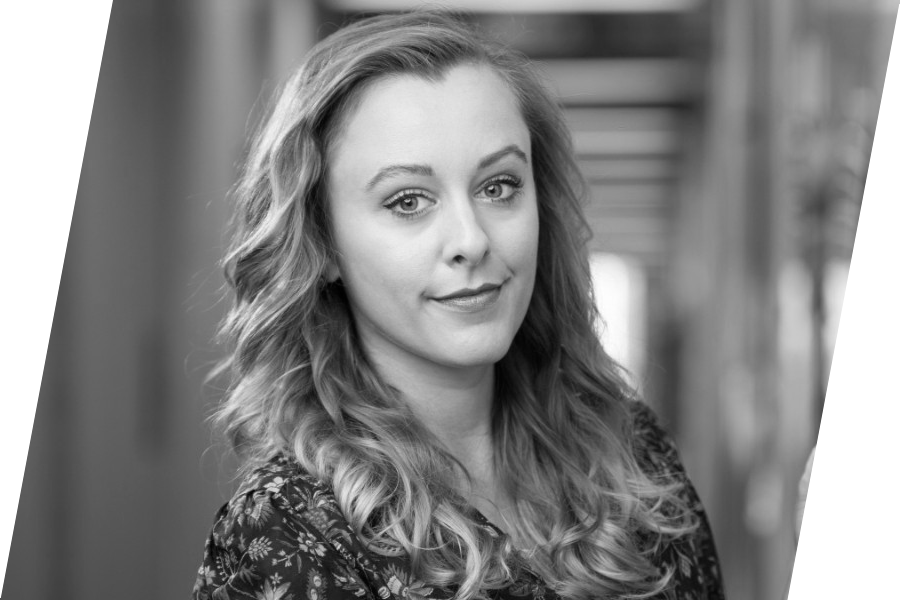Darian Stahl
Earlier this year we had the chance to meet up with printmaker and bookmaker Darian Goldin Stahl. Darian is a PhD student in Humanities at Concordia University in Montreal, and was recently awarded Canada’s prestigious Vanier Graduate Scholarship for her research potential. Darian received her MFA in Printmaking from the University of Alberta in 2015, and her BFA in Printmaking at Indiana University Bloomington in 2011. She first studied printmaking at the Scuola Internazionale di Grafica in Venice, Italy in 2008.
Darian’s arts-based research focuses on the health humanities, patient narrative, and chronic illness. She has been awarded solo and two-person exhibitions in Vancouver, Calgary, Ottawa, and Winnipeg. Darian has also lectured at numerous conferences on her research and has exhibited her work in many countries around the world, including the United States, Canada, Scotland, China, Slovakia, and Egypt.
Darian also contributed to Imaging and Imagining Illness: Becoming Whole in a Broken Body (Wipf & Stock, 2018), a collection of essays edited by her sister and collaborator Devan Stahl.
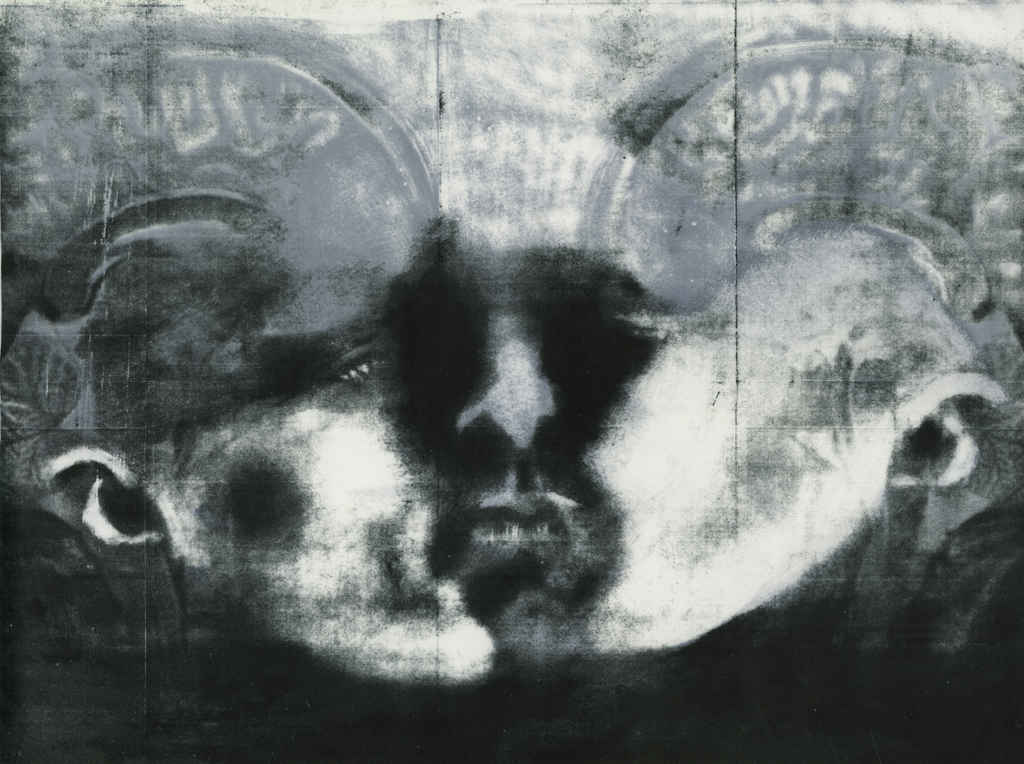
What does printmaking mean to you?
I’m just printmaking’s biggest fan. I took one class in Italy in Study Abroad, and I’ve been hooked ever since. I think what really got me into printmaking specifically is its ability to meld hand marks and photographic marks through the layering process, either through lithography or through silkscreen or some kind of transfer. Being able to hold the mark of the hand with photography was something no other medium was offering, so that just made a lot of sense for the kinds of images that I wanted to make.
I also really started to fall in love with printmaking at the University of Indiana when I took a course on the history of anatomy and botany. Printmaking had a huge impact on the history of anatomy. With the invention of the printing press, images and words could be widely disseminated, and anatomists actually worked with artists to translate their findings in anatomy into the pages of a book, and then that information could be sent elsewhere. For me, as a budding printmaker, I just loved this combination of science and art.
Did you have an idea of the sort of prints you wanted to make before you really practiced printmaking?
I think I was really influenced by the courses I was taking at the time. It was really that course on the history of anatomy that really changed the trajectory of my studies. As we were learning about the history of anatomy and how ideas changed and evolved over time, there were such creative ways to explain the body that they used before the invention of the microscope. There were imaginative ideas such as a literal fire in our hearts, and it was fuelled by breathing in and then our breaths were the smoke. Literal fire in our hearts, and that’s how our bodies were kept warm! That’s humorous today, but these were real conceptions of the body. That was so fascinating to me.
Another idea I really hooked on to was that of impressions, where someone will view a very shocking image and that image is imprinted on our “inner skin.” If we give this image a lot of psychic power and keep thinking about it, it manifests on the surface of our skin, and this was a way of explaining moles and birthmarks. They kind of had to work backwards with these theories to explain how the phenomena of the body work. It seems poetic to us today, but what of our theories today will be the laughable thing, right?
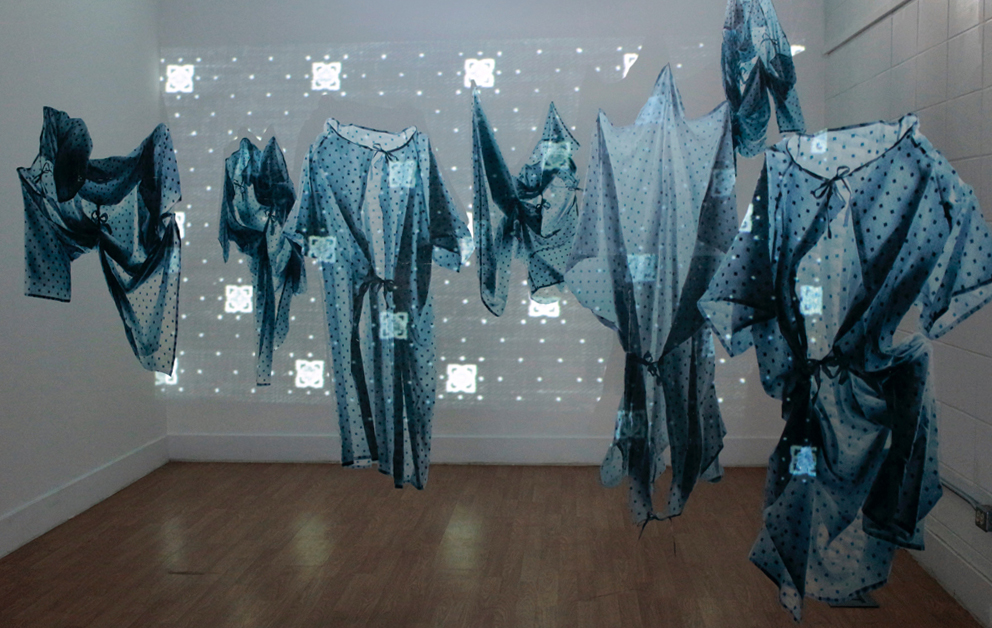
What is it about the human narratives within these stories that is appealing to you as an artist?
My undergrad thesis was focussed on the history of anatomy and translating these bygone notions into a contemporary print, but when I started my masters I knew I wanted to shift my focus onto contemporary diseases and depictions of the body because my sister [Devan Stahl] had just been diagnosed with MS. She had this trove of images of her body, of her MRI scans, that she procured from her doctor. Top to bottom, left to right, back to front—all the way through her body, from her head to the bottom of her torso. She had thousands of these slices of her body, and I was like “This is my raw material now.” To start thinking about how to create an image that will speak more about disease, and use as a metaphor to say what the scans aren’t saying. The scans have a singular purpose to diagnose disease, but they’re saying absolutely nothing about what it is to live with disease. I wanted to re-present these images and speak more about what it’s like to live with chronic illness on a daily basis. In images of someone you know so well you expect to be able to recognize them no matter what.
I didn’t know exactly what my sister’s life was like living with chronic illness. I knew that I wanted to talk about it, but she and I hadn’t even really talked about it. I think it was just too painful to really talk about, so we just chose not to. It was almost a circumventing of that direct communication, because she started to talk about it on her own in theoretical papers and conference papers, and these writings she would then email to me as a way to talk about this very difficult topic in a very layered and distanced way, which for us really worked in the beginning. So that’s how I was able to gather this qualitative research of her life, and then translate those narratives visually.
Do you and Devan find it easier to talk about it now?
Yeah, absolutely. We can talk about it now. It’s gone from zero to something, which is probably the biggest hurdle for anyone.
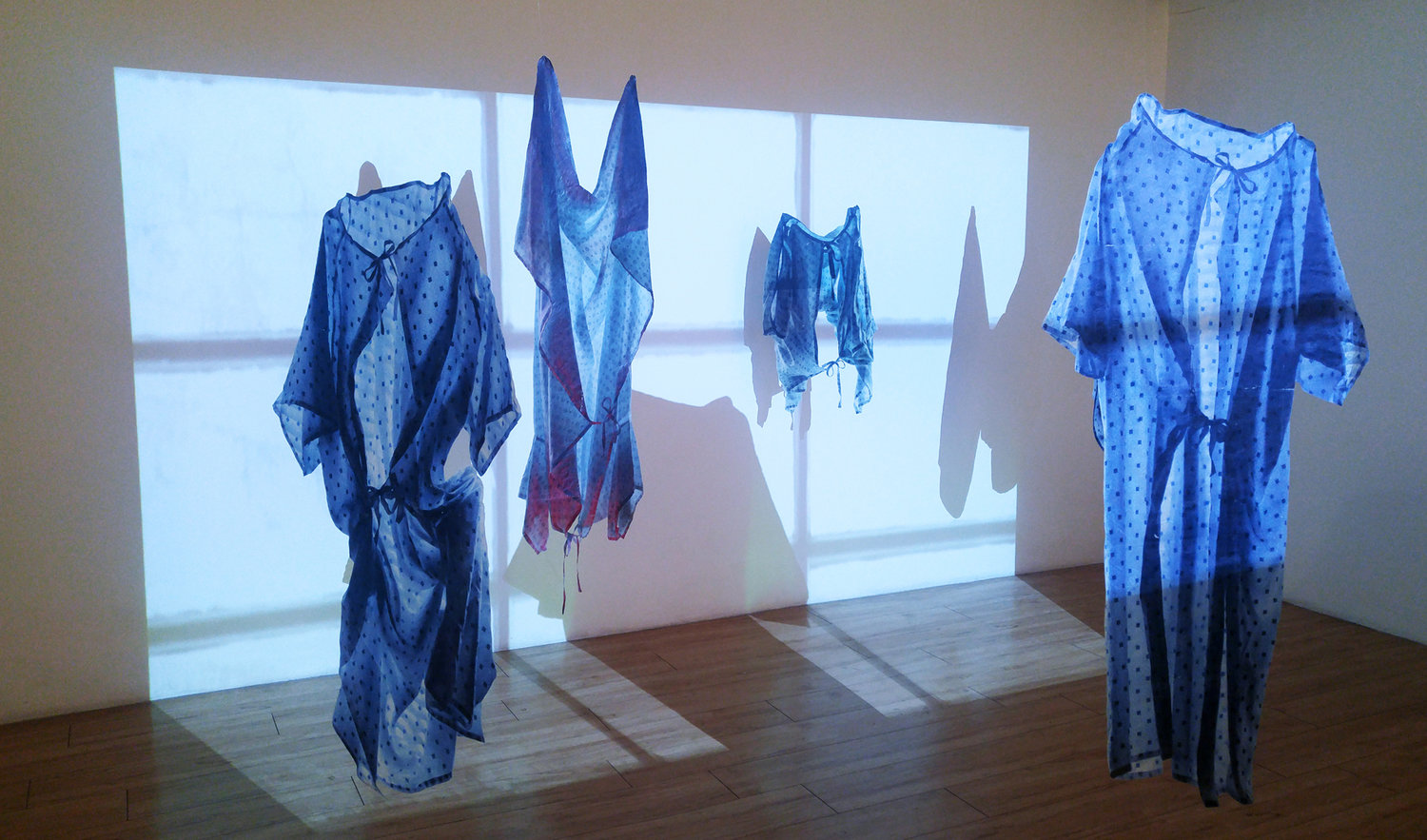
Can you tell me a little bit about what some of the responses to your work have been like?
The responses have been overwhelmingly positive, which is great. It’s always the fear in art, but especially with such a personal topic, that maybe it won’t have a universal quality about it. But that turned out to not be the case at all, which I find a real point of success in my artwork so far.
A lot of people who are also care-takers find resonance in these images. One of my supervisors at the University of Alberta became a care-taker for her father, and she saw her own experiences in this work. She felt a lot of the unease I was talking about. Thinking about how your space changes, and the emotional needs of an impaired body, are themes which I think are universal. People were able too project their own impressions onto the artwork. That, for me, was the most valuable outcome of the work.
Other audiences have very different reactions—especially doctors. I’ve presented at medical conferences and have found that a lot of physicians still want to read the MRI scan. I had a neurologist tell me that people are going to want to see the lesions on the brain, and I didn’t think that was necessary. I wanted to use the scans as a symbol, rather than as a readable, diagnosable image of disease in general. The images aren’t necessarily about MS in particular—they could be anyone experiencing unease with their bodies. This single image can mean so many different things to different people!
How is art and artmaking helpful in working through suffering and death?
There is a small number of people who do feel alienated by my artwork. Sometimes viewers will approach me and take a more negative response to viewing such hard art. I think they find it a bit too charged, and the topic uneasy—my interpretation is that they don’t want to be confronted with it. They’ll ask me why I chose to talk about such a depressing issue, or why there isn’t more colour, or why it’s so sad. I don’t think the artwork is either sad or happy, but I do think it is a contemplative look at a very possible future of impairment. That’s a hard thing to think about. But I think art has the power to think about something in a way that circumnavigates language. This something I’m interested in doing in the future, but there are lots of workshops about making art together. Not necessarily as art therapy, but as a way to communicate feelings that are very difficult to verbalize. I think that’s the greatest power that art has. Many different kinds of people can feel empowered by making things to share with others about yourself that might not otherwise be possible.
Would it therefore be fair to say that art is a social obligation?
Yes, I think so. Art is such a powerful medium—to not use it in such a way that propels social justice would be to do a disservice. And not just for medicine, but that’s art that has to do with civil rights, war, immigration. Works that bring issues to the surface so they can be actively shared with others and something that has to be dealt with. But with medicine in particular, there are so many images that are engaged with so passively, and that by reimagining—in this case MRI scans—it’s unsettling the hierarchies between doctors and patients, and the specialized knowledge that doctors have in being able to read medical scans and tell you about yourself. Devan and I are flipping this on its head. Now we are telling doctors about Devan in her own scans. So I think its a really powerful move! And I haven’t had any negative response from physicians yet.
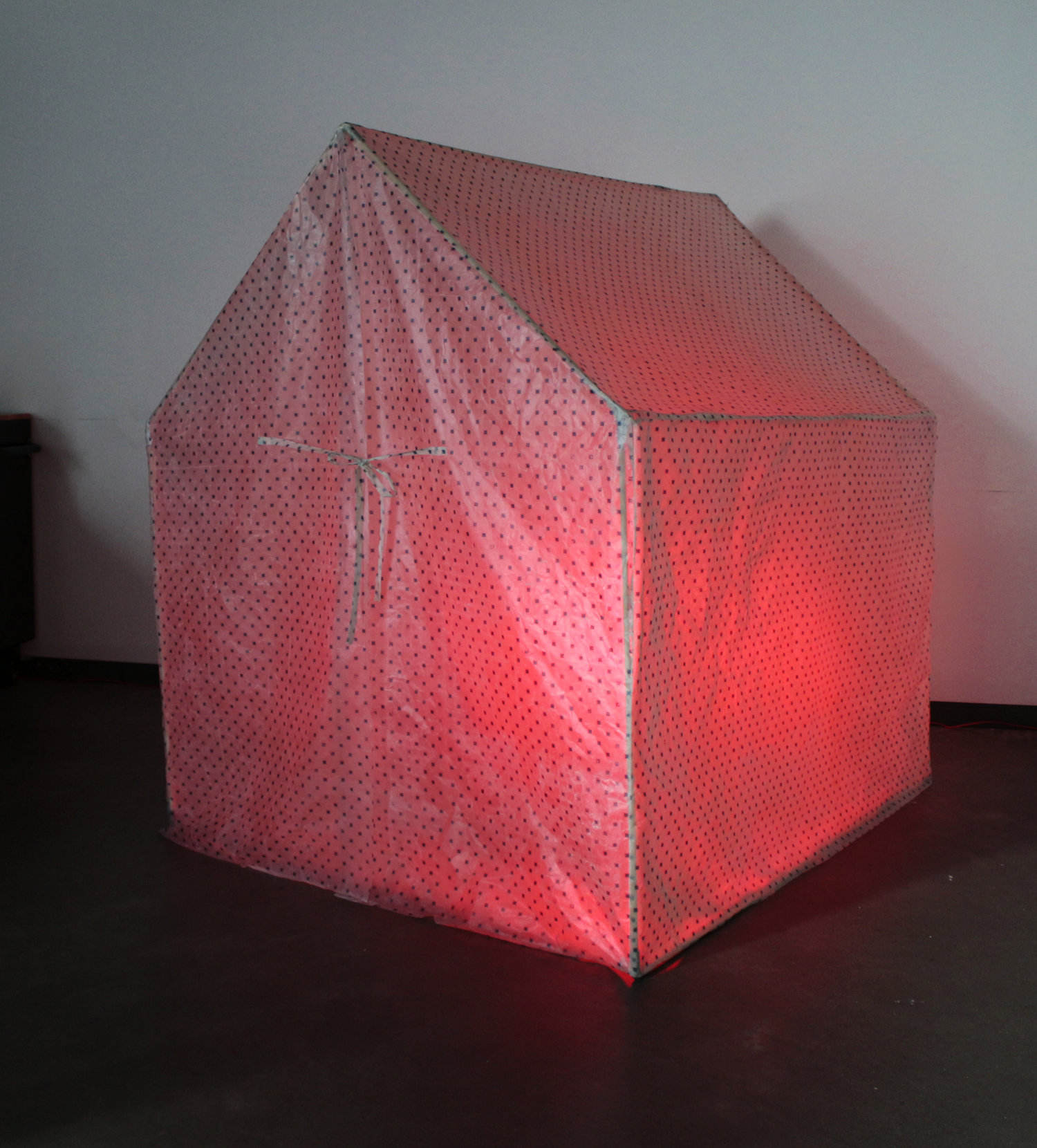
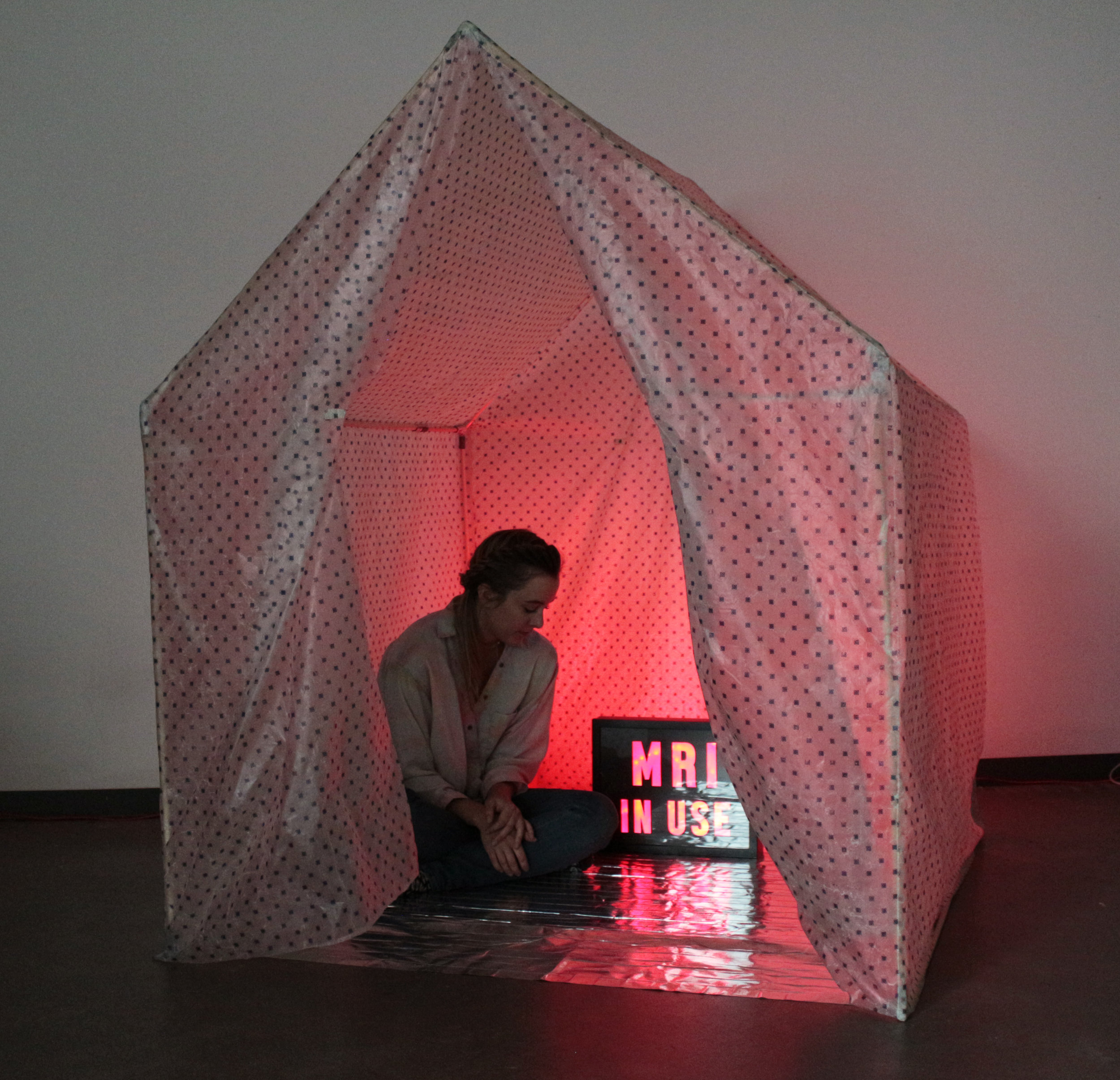
Devan is a bioethicist. How regularly does Devan engage with physicians?
Her current position is equal parts teacher, chaplain, and ethicist. So she has lots of contact with doctors and the families of patients for courses of treatment.
Many people find strength through their faith in times of illness and physical suffering. Could you talk a little bit about some of the commonalities between religion and medicine?
Yeah, for Devan it is absolutely connected to faith because that’s a huge part of who Devan is and her experiences, and she was diagnosed with MS during her time at divinity school. So thinking about the ill body in reaction to Christian theology has a huge impact on who she is today.
With my work, I am in no way offering medical care, but what I am offering is a very different kind of care. I see that as the care of the soul. I felt that her diagnosis was a big weight, and we didn’t have the circumstances to help her share her diagnosis with us. So in my artwork I’m circumnavigating the need to communicate verbally, and I’m using the images as a tacit form of empathy, to quite literally offer my hand to lighten this burden upon her soul. My handmark is my gift to her. Devan and I are only beginning to theorize and research the topic of flesh, and how flesh is punctured and set aside in the scanning process. But flesh is a huge identifier of who we are, and through the printmaking process I’m able to give flesh back to her scans. To rehumanize them in this way, to give a home to her viscera that’s been exposed in the scans, and reflesh them. It’s been brought up to us this could be a kind of transubstantiation, turning these images into flesh. That’s a topic I’m really interested in researching more.
Are there other artists doing what you do?
Harking back to my history of anatomy class, I’d say that lot of my influences are Renaissance anatomists. They were really interested in looking for the soul through anatomy. This was a huge part of looking into the body was trying to find the house of the soul, and even if we couldn’t find the soul, we could definitely know the house that it lives in. My favourite anatomist by far is [Andreas] Vesalius, and his collaboration with Stephen van Calcar to produce their super-famous tome of anatomy, De fabrica, that really revolutionized how we depict the body. That was huge tradition in the early Renaissance, and even before the Renaissance, to look through the body to find the soul. Galen was interested in the liver as the house of the soul, because of its regenerative aspects. Isn’t that interesting? I love the search through the body to find where it maybe it exists, and how this gets confused because before then they really only had animals to dissect, so depictions of the human body got confused with animal anatomy. The liver that Galen describes has five lobes, which is an aspect of a cow liver, not a human liver. So we have this five-lobed liver as the house of the soul—there’s a lot to unpack there!
Yeah, these Renaissance anatomist and their collaborative printmaker partners searching through anatomy for the house of the soul. They’re my influences. [Their prints] are really supposed to be beautiful and functional. For today’s audience they’re not very functional, they get a lot of things wrong, but I love this idea of having images that serve two purposes.
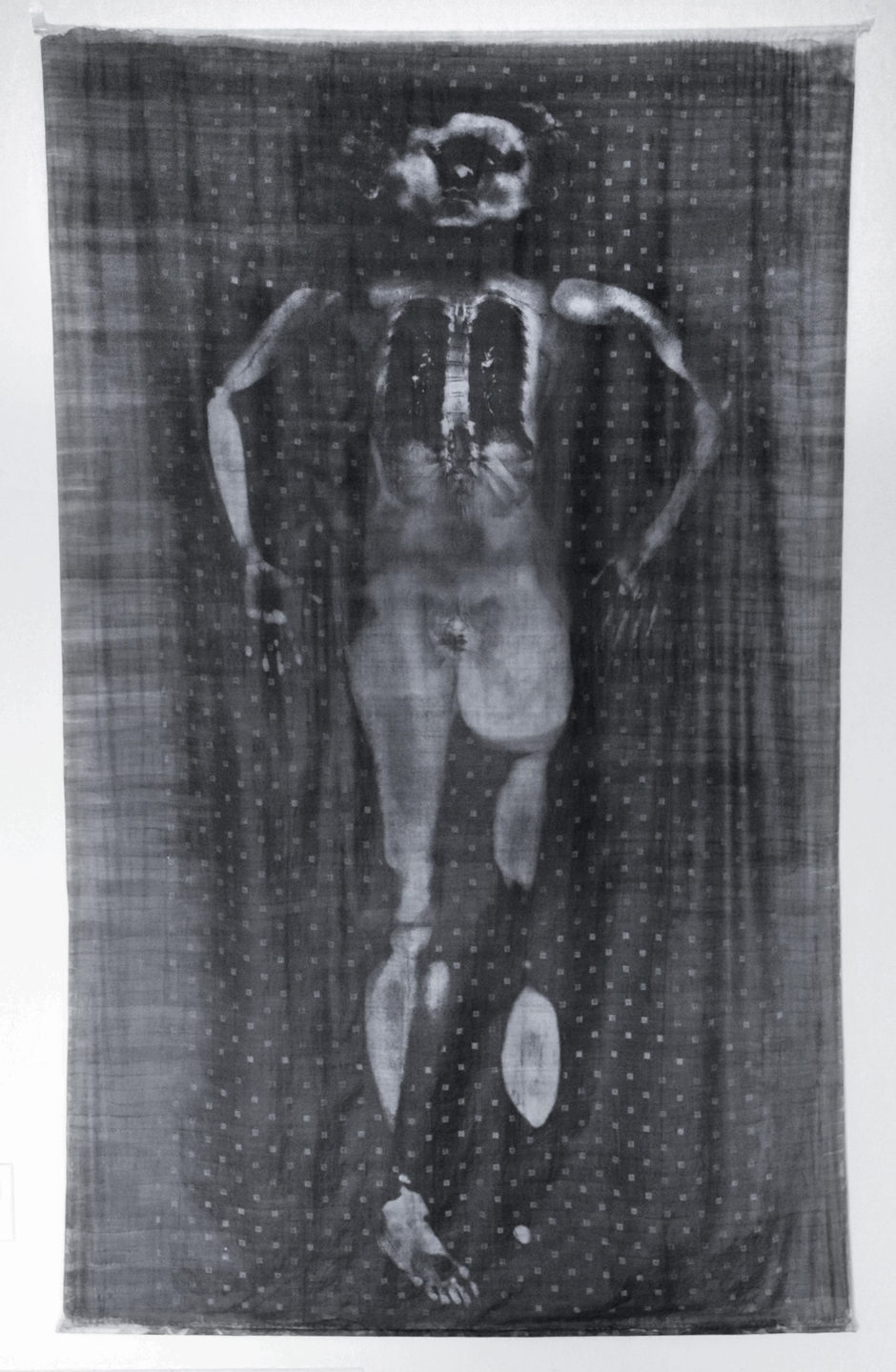
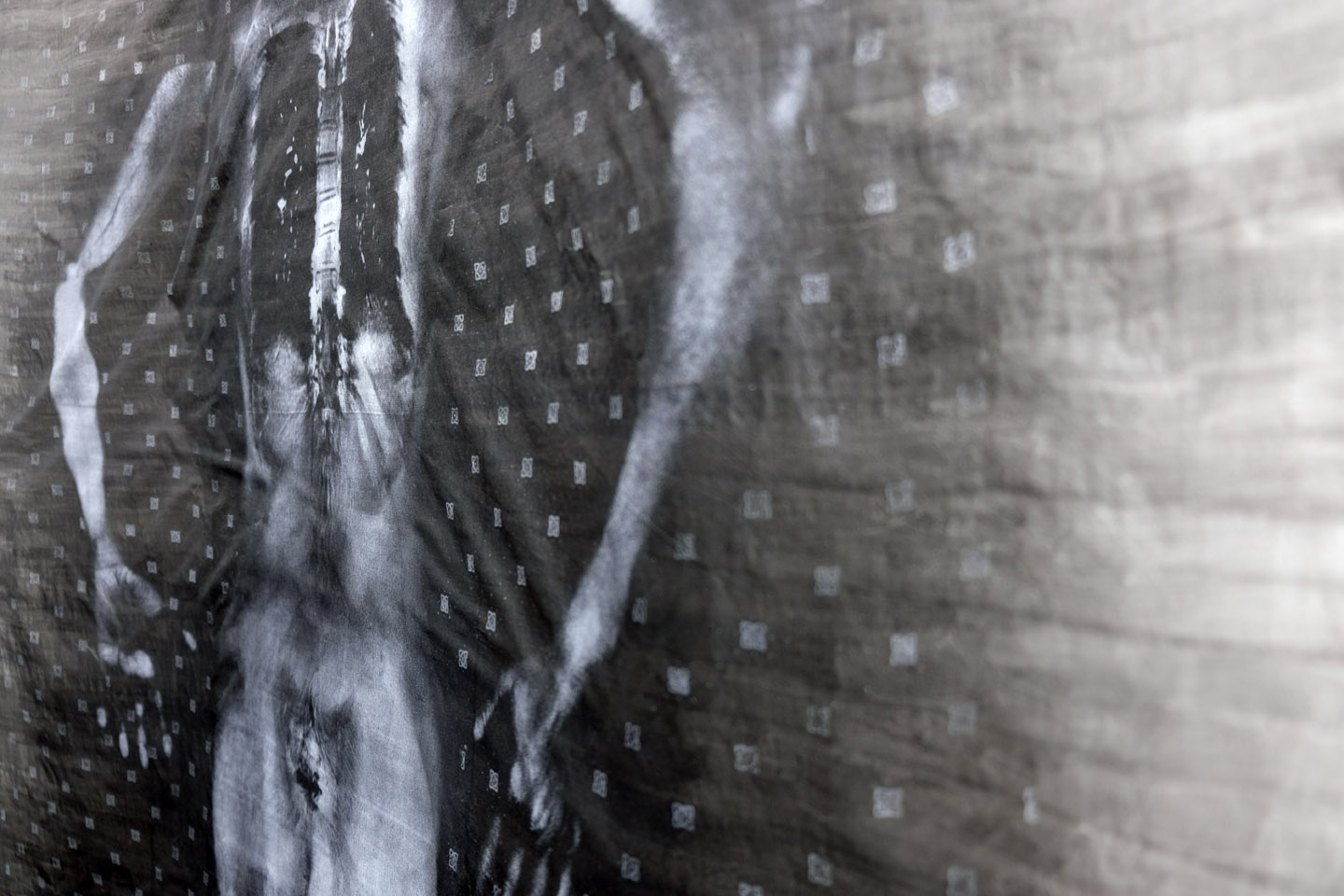
This interview has been edited for length and clarity.

